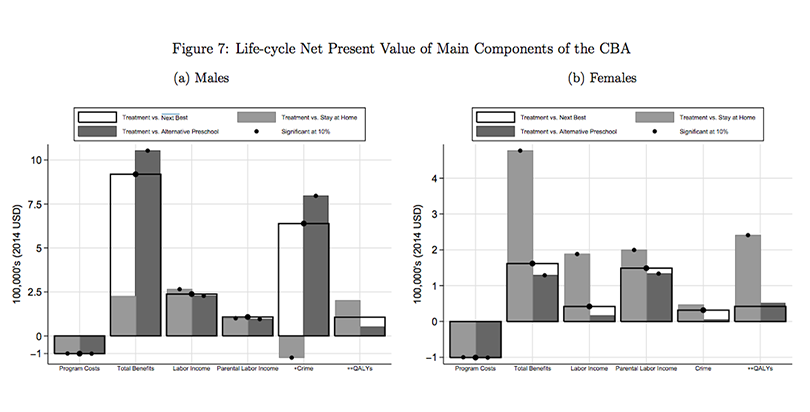Intensive Preschool Programs Can Yield Massive Returns, Especially for Boys, Nobel Laureate’s Study Shows

Heckman, a University of Chicago economist whose credentials include both a Nobel Prize and the John Bates Clark Medal, has spent much of his career researching the economics of human development. That analysis has included a focus on ABC/CARE, two identical childhood intervention studies that were conducted in the 1970s and have provided extremely rare longitudinal data on their subjects long into adulthood.
Unlike the famed Perry Preschool Study, which offered services to 3- and 4-year-olds, ABC/CARE enrolled children virtually at birth, providing full-time preschool to families that otherwise wouldn’t have been able to afford it. Children received care focused on language and cognitive development through age 5, followed by academic support through age 8. Check-ins with subjects followed at ages 12, 15, 21, and 30.
Heckman and his co-authors measured the programs’ effects on IQ, health, income, and criminal activity. They found that access to high-quality preschool yielded an annual return on investment of 13.7 percent — growth that would elude the savviest money managers on Wall Street.
The results of the studies would have to be outstanding to justify the money spent: $18,514 per child per year. That eye-popping price tag has led experts like the Brookings Institution’s Russ Whitehurst to doubt that programs like ABC/CARE and Perry could ever be scaled to serve the tens of millions of poor families that might be eligible for them.
“The costs of the program are substantial, as has frequently been noted by critics,” the researchers acknowledge. “But so are the benefits, which far outweigh the costs.”
Those advantages weren’t only imparted to the children enrolled in ABC/CARE. Gifted with a substantial child care subsidy, their parents (particularly those who didn’t have other children) often worked more hours and earned higher wages. Some enrolled in further education themselves, attaining a degree that could bring greater income down the line.

Though participants of both sexes saw improved life outcomes, boys enjoyed a particular boost. “Benefits from reductions in criminality and increased labor income are pronounced for males, contributing to their larger estimates relative to the females estimates,” the authors write. “However, when we omit crime from our analysis, we still estimate substantial returns for males.”
As cities increasingly look to expand their public pre-K offerings, ABC/CARE are still offering lessons in program design and implementation as their subjects enter middle age.
Get stories like these delivered straight to your inbox. Sign up for The 74 Newsletter

;)
